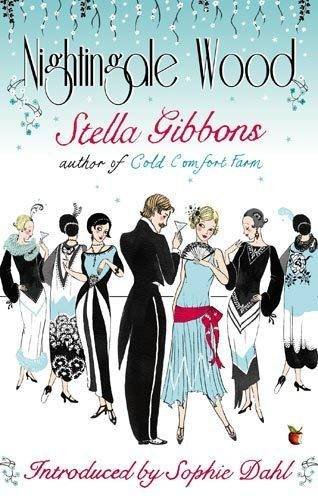
(Part of 1938 reading week)
From the very first moment of meeting ‘Wither’ as a family name, I knew this book would not only be SG’s up-dated take on Cinderella, but would also ape Dickens’ love of witty names. According to the introduction (by Sophie Dahl) this was SG’s first published foray into this territory – to be followed by books inspired by The Snow Queen (1939: My American) and Beauty and the Beast (1958: White Sand and Grey Sand).
But SG isn’t clumsy in her choice of names – one has to look carefully or even read them aloud to get the joke. The subtlety (or otherwise) of the characterisation, scene-painting and plot twists, is typical SG. Yes, there are the stock characters: types first met by many of us in CCF – the beautiful (if ordinary) man, the frustrated ‘old maid’, the controlling parent, the contriving wife, the slattern, the bizarre, the heartless and the deceitful. There are poor victims and indifferent rich, mismatched couples and lost causes.
The different houses also claim attention – The Eagles being a totally inappropriate name for the claustrophobic prison, brooded over by Mr Wither, and the eagles themselves being plaster ‘not badly modelled’ only remain in place because Mr Wither dared not go against his own, dead, father’s wishes. The heavy weight of history and time lying heavy upon one, combined with the unrelenting brownness of the interior, neatly sum up life at the Wither’s house. How can the newly widowed Viola (Cinderella?) with her suspect background and lack of decision, ever hope to survive in such a place? Meanwhile, Saxon’s mother lives in a squalid cottage and Victor zooms down to visit his mother in the magical Grassmere – the house of light, pleasure and luxury, perched across the valley from The Eagles, and its precise opposite, in every way.
The plot twists first one way, then another, with dramatic and farcical turns including the depiction of weather which favours the rich and punishes the pseudo-genteel. She speaks of money, breeding, aspiration, frustrated dreams and comical coincidences in much the same way as in CCF. However, one’s sympathies settle early on in the book with the widowed Viola and her sister-in-law Tina, each (albeit, flawed) caught in Mr Wither’s slowly decaying web of dullness. Madge, the plump (and plumper) back-slapping ‘don’t like mush or beastliness’, elder daughter bumbles through the book – and towards middle age – insulated by her simple desires for fresh air and a dog. Rustics abound – always appearing to know much more than they ought to – and to drink more than is good for them. Fights and retribution juggle with saving face and pretending to be gracious. One longs for everyone to get their just deserts – and, on the whole, they do.
The book is an unpicking of the unfairness and superficiality of 1937/38 society, in a slapstick, pantomime way. It wanders from one plot story to another (a precursor of the ‘soap opera’ of today?) and its denouement(s) owe much to the pantomime structure. Some of the promising subtlety of the start of the book tends not to live up to expectation as the plot drives one on through the story and characters fade, becoming more two-dimensional. Phyllis never rises off the page and (spoiler alert) flounces off in a somewhat predictable scene. However, little touches like ‘I’d sooner kiss my typist’ (Victor, living up to his name) add spice to what would otherwise be a piece of tedious tying up of stray plot lines.
The younger women tend to irritate the modern reader (well, this one anyway!). They tend to sniff and weep a little more than seems necessary, fail to come to the point, and spill tears (and worse) upon a somewhat over-described (in the wardrobe department) of manly or womanly chests. The word ‘sex’ seems peppered over the pages when the plot needs a bit of a stir, as well.
Reading the book now, one cannot escape the vision of the terrible war about to fall upon them all – but, within the book, there seems to be no sense of this – merely a distant skirmish in distant parts – and any references to war still look back to the start of the century. In her ending, SG clearly does not envisage such changes as were about to occur in a world turned upside down. Her clocks are stopped in 1938.
But, for all these irritations, I couldn’t help being beguiled by Nightingale Wood. Perhaps SG best betrays her neat docketing of the subtle strata of her women in her description of the face cream – a nice little touch in chapter XIII: Mrs Spring – twelve and sixpence, Phyllis – six and sixpence, Tina – two and sixpence, and Viola – sixpence a tube. Thus the differences are summed up – in a commodity which probably contained much the same ingredients. And perhaps that is SG’s genius – she points out that we are all much the same, under the skin.

Great review, Mum! Makes me v much want to read it. Thanks for participating!
It’s here when you want to read it! Much fun.
Lovely review! Thanks for taking part!
Thank you – it was great fun.